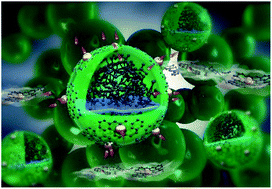Distinctive conductivity improvement by embedding Cu nanoparticles in the carbon shell of submicron Si@C anode materials for LIBs†
Abstract
Silicon (Si) possesses a high specific capacity (4200 mA h g−1) as the anode of lithium-ion battery (LIBs). However, the huge volume change during lithium intercalation/deintercalation is a big challenge. In this work, submicron Si waste in the kerf waste from the photovoltaic industry was used as the raw material, and a Si@C–Cu core shell structure was fabricated by the hydrothermal process. The copper (Cu) nanoparticles were successfully embedded in the carbon shell, which not only brought about a distinctive improvement in the conductivity of the Si@C anode but also strengthened the carbon shell due to the catalytic graphitization by Cu nanoparticles so as to better withstand the expansion stress from Li+ intercalation in Si. As a result, the initial specific discharge capacity of the Si@C–Cu anode was 3441 mA h g−1 with a coulombic efficiency of 63.8%, and it retained 2024 mA h g−1 after 250 cycles at a current density of 0.2C (1C = 4200 mA g−1). Moreover, it maintained 1572 mA h g−1 at a current density of 1.0C, which recovered to about 3000 mA h g−1 when the current rate returned to 0.1C. This highlights the promising potential of the novel material formed by embedding Cu nanoparticles in the Si@C sphere as an anode in lithium-ion batteries.



 Please wait while we load your content...
Please wait while we load your content...